
Melcombe Regis is an area of Weymouth in Dorset, England. Situated on the north shore of Weymouth Harbour and originally part of the waste of Radipole, it seems only to have developed as a significant settlement and seaport in the 13th century.

South Dorset is a constituency represented in the House of Commons of the UK Parliament since 2024 by Lloyd Hatton, of the Labour Party. The constituency was created as a consequence of the Redistribution of Seats Act 1885, although the area covered has changed since then.

Radipole is a suburb of Weymouth in Dorset, England.
Weymouth and Melcombe Regis was a parliamentary borough in Dorset represented in the English House of Commons, later in that of Great Britain, and finally in the Parliament of the United Kingdom. It was formed by the Union of Weymouth and Melcombe Regis Act 1571 which amalgamated the existing boroughs of Weymouth and Melcombe Regis. Until 1832, the combined borough continued to elect the four Members of Parliament (MPs) to which its constituent parts had previously been entitled; the Great Reform Act reduced its representation to two Members, and the constituency was abolished altogether in 1885, becoming part of the new South Dorset constituency.
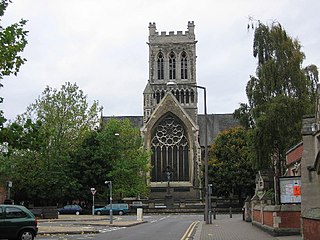
St Paul's Church is a Church of England parish church in Burton upon Trent, Staffordshire England. The church, on St Paul's Square and near the Town Hall, opened in 1874 and was designed by the architects James M. Teale and Edmund Beckett Denison. Later additions are by G. F. Bodley. The building is listed as Grade II*.

Holy Trinity Church is a Church of England church in Weymouth, Dorset, England. Built of Portland stone in 1834–36, and extended and re-oriented in 1886–87, the church is a Grade II* listed building. Designed by Philip Wyatt, it has been described as being of "intrinsic architectural interest", having an "unusual scheme of development" and "occupying a significant position on the axis of Weymouth's Town Bridge".

All Saints Church is a Church of England church of 15th-century origin in Wyke Regis, Weymouth, Dorset, England. Built largely of Portland stone, the Royal Commission on the Historical Monuments of England have described the church as a "remarkably consistent and unchanged 15th-century design". It has been a Grade I listed building since 1953. Facing Wyke Road from the modern cemetery opposite the church is the Wyke Regis War Memorial, erected in 1919.

St Mary's Church is a Church of England parish church in Weymouth, Dorset, England. Built of Portland stone in 1815–1817, the church has been described as having an "austere design in Palladian mode". It has been a Grade I listed building since 1953.
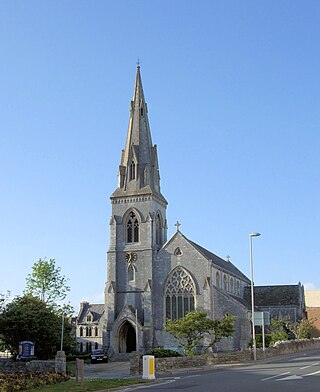
St John's Church is a large evangelical Church of England church in Weymouth, Dorset, England. It was built in 1850–1854 to the designs of Talbot Bury and is a Grade II* listed building.
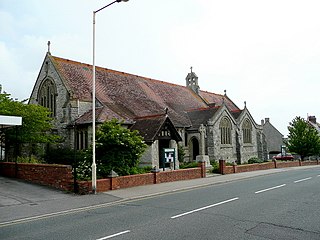
St Paul's Church is a Church of England parish church in Westham, Weymouth, Dorset, England. Designed by George Fellowes Prynne, the bulk of the church was built in 1894–96. It has been a Grade II listed building since 1974, with the World War I memorial outside also designated Grade II in 2016. In their book The Buildings of England: Dorset, John Newman and Nikolaus Pevsner noted the church's "idiosyncratic but convincing design".
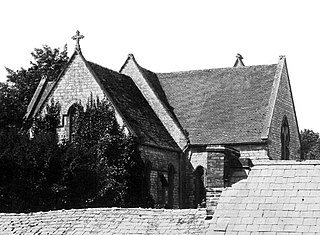
Christ Church was a Church of England church in West Fordington, Dorchester, Dorset, England. It was built in 1845–46 and demolished in 1933.

St Laurence's Church is a Church of England parish church in Upwey, Dorset, England. Much of the existing church dates to the late 15th century, with some earlier fabric and later additions of the 19th and 20th centuries. It is a Grade II* listed building.
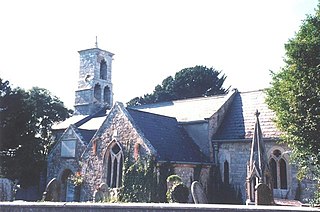
St Ann's Church is a Church of England parish church in Radipole, Weymouth, Dorset, England. The church dates to the 13th century, with later additions, and is a Grade II* listed building. Both the boundary wall of the churchyard and church room opposite are also Grade II listed.
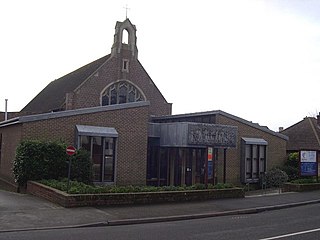
St Aldhelm's Church is a Church of England church in Radipole, Weymouth, Dorset, England. It was designed by William Henry Randoll Blacking and built in 1939–41, with later additions.

Hope United Reformed Church is a United Reformed Church in Weymouth, Dorset, England. It was built in 1861–62 and has been a Grade II listed building since 1974.
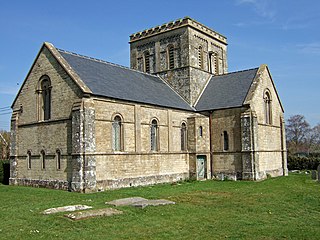
Christ Church is a Church of England parish church in East Stour, Dorset, England. The church, a Grade II listed building, was designed by George Alexander and built in 1841–42. Today the church forms part of the Stour Vale Benefice.

Holy Trinity Church is a Church of England church in Salway Ash, Dorset, England. The church was designed by George Crickmay and built in 1887–89. It now forms part of the Beaminster Area Team Ministry.

St Mary's Church is a Church of England parish church at Brownsea Island, Dorset, England. The church was built in 1853–54 and is a Grade II* listed building.
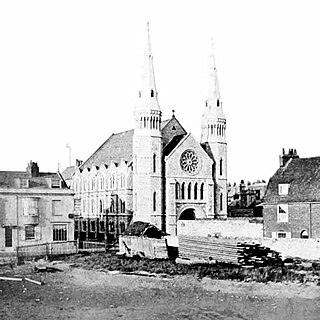
Gloucester Street Congregational Church was a Congregational church in Weymouth, Dorset, England. It was built between 1862 and 1864 to replace a chapel of 1804 at St. Nicholas Street. It closed as a place of worship in 1971 and was demolished in 1980. The site is now occupied by the retirement housing complex, George Thorne House.

St Osmund's Church is a Church of England parish church in Osmington, Dorset, England. It is a Grade II* listed building.





















